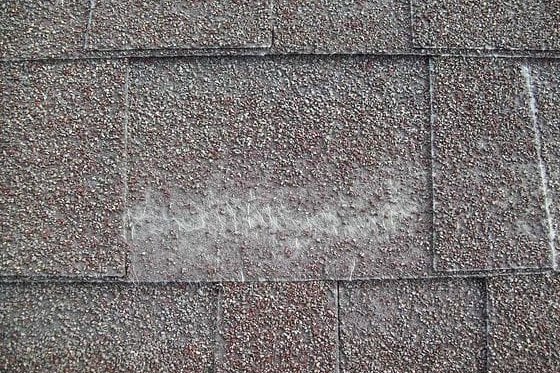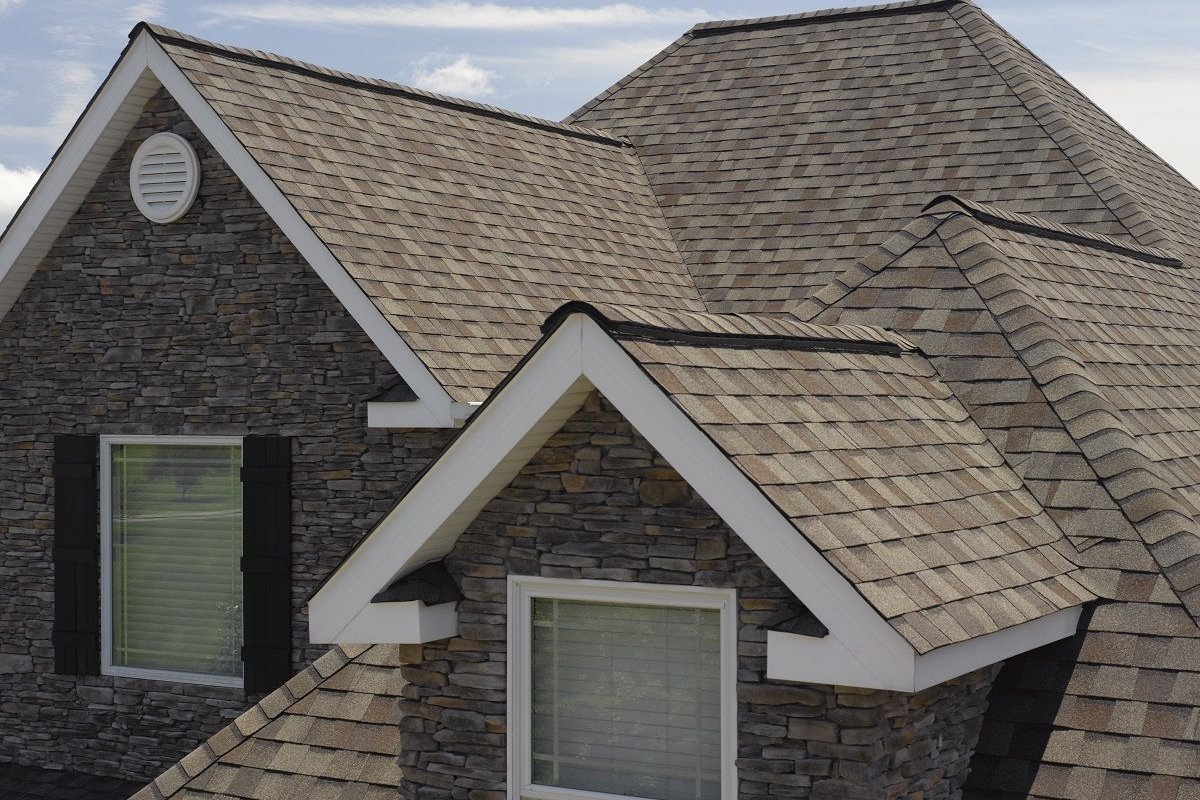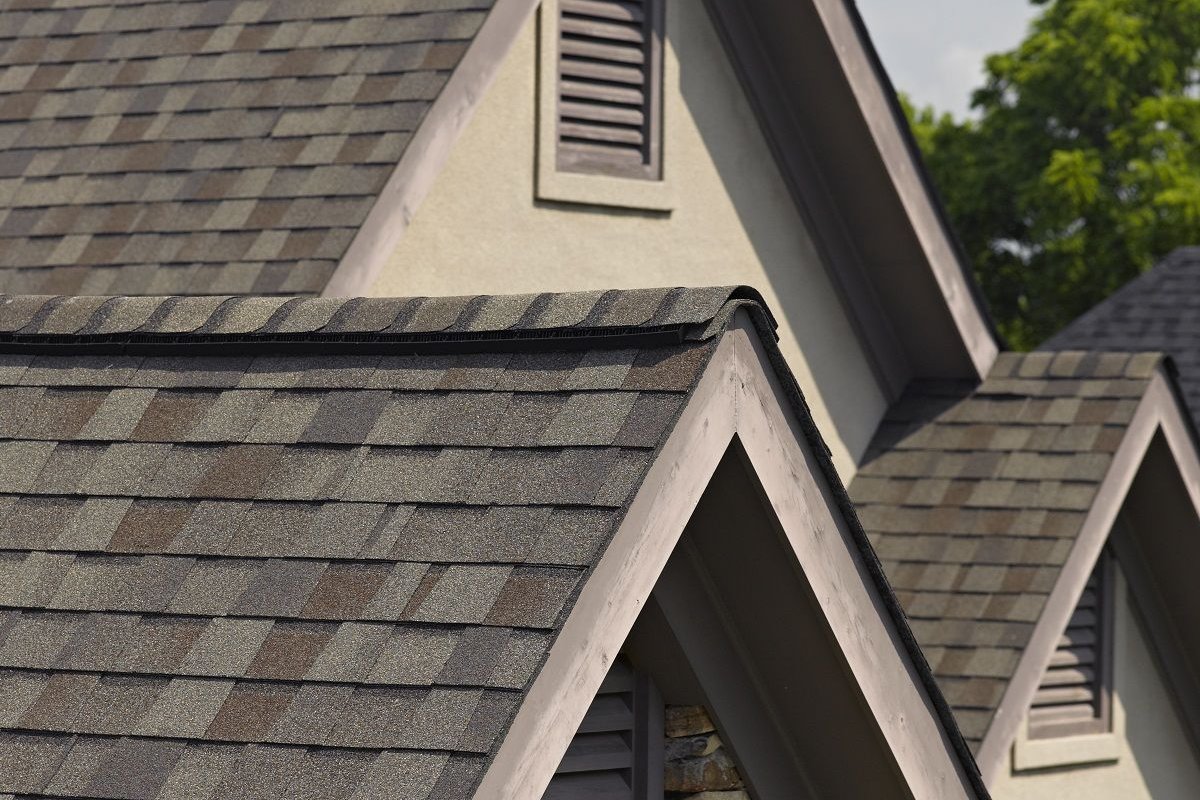Choosing the Right Roofing Materials in Scappoose, Oregon
Selecting the appropriate roofing material is one of the most significant decisions a homeowner will make. The roof is your home's primary defense against the elements, playing a critical role in structural integrity, energy efficiency, and overall curb appeal. For homeowners in Scappoose, Oregon, understanding the options available and how they perform in the local climate is essential to making an informed choice that provides lasting protection and value. This guide explores the most common roofing materials and factors to consider when planning your next roofing project.
Whether you're planning a full roof replacement, budgeting for future home improvements, or simply evaluating the current condition of your roof, getting a sense of potential costs is a crucial first step.
Planning your roofing project or curious about potential costs? Get an instant, accurate estimate for your home based on satellite imagery and local pricing data. Get your free instant roof estimate
Exploring Popular Roofing Material Options
The roofing market offers a diverse range of materials, each with unique characteristics, benefits, and drawbacks. The best choice for your home will depend on factors like your budget, desired aesthetic, the architectural style of your house, local building codes, and the climate conditions prevalent in your area. Let's delve into some of the most popular options.
Asphalt Shingle Roofing
Asphalt shingles are the most widely used roofing material in North America, and for good reason. They offer a balance of affordability, ease of installation, and decent performance. Asphalt shingles come in two primary types:
- 3-Tab Shingles: These are the most basic and economical type, recognized by their distinct cutouts that make each shingle appear as three separate tabs. They are relatively lightweight and easy to install but have the shortest lifespan, typically 15-20 years, and offer the least resistance to wind and impact damage.
- Architectural (Laminate) Shingles: Also known as dimensional shingles, these are thicker and more durable than 3-tab shingles. They are manufactured with multiple layers of asphalt and fiberglass, giving them a textured, dimensional appearance that can mimic the look of wood shakes or natural slate. Architectural shingles have a longer lifespan, often 25-30 years or more, and provide better wind resistance and aesthetic appeal.
Asphalt shingles are made from a fiberglass mat coated with asphalt and covered with ceramic granules. The granules provide color, protect the asphalt from UV rays, and add fire resistance. While relatively simple in composition, the quality of the materials and the manufacturing process significantly impact the shingle's performance and longevity.
Pros of Asphalt Shingles:
- Affordability: Generally the least expensive roofing material upfront.
- Ease of Installation: Widely available, and most roofing contractors are experienced in installing them.
- Variety: Available in a vast array of colors and styles to match different home aesthetics.
- Repairability: Individual damaged shingles can often be replaced, though matching color can be challenging on older roofs.
Cons of Asphalt Shingles:
- Lifespan: Shorter lifespan compared to materials like metal, tile, or slate.
- Durability: Less resistant to extreme weather conditions like high winds, hail, and temperature fluctuations compared to more robust options.
- Environmental Impact: Asphalt shingles are petroleum-based and contribute significantly to landfill waste at the end of their life, although recycling options are becoming more available in some areas.
- Moss and Algae Growth: In damp climates, asphalt shingles, particularly those on shaded areas, can be susceptible to moss and algae growth, which can degrade the granules and shorten the roof's life.
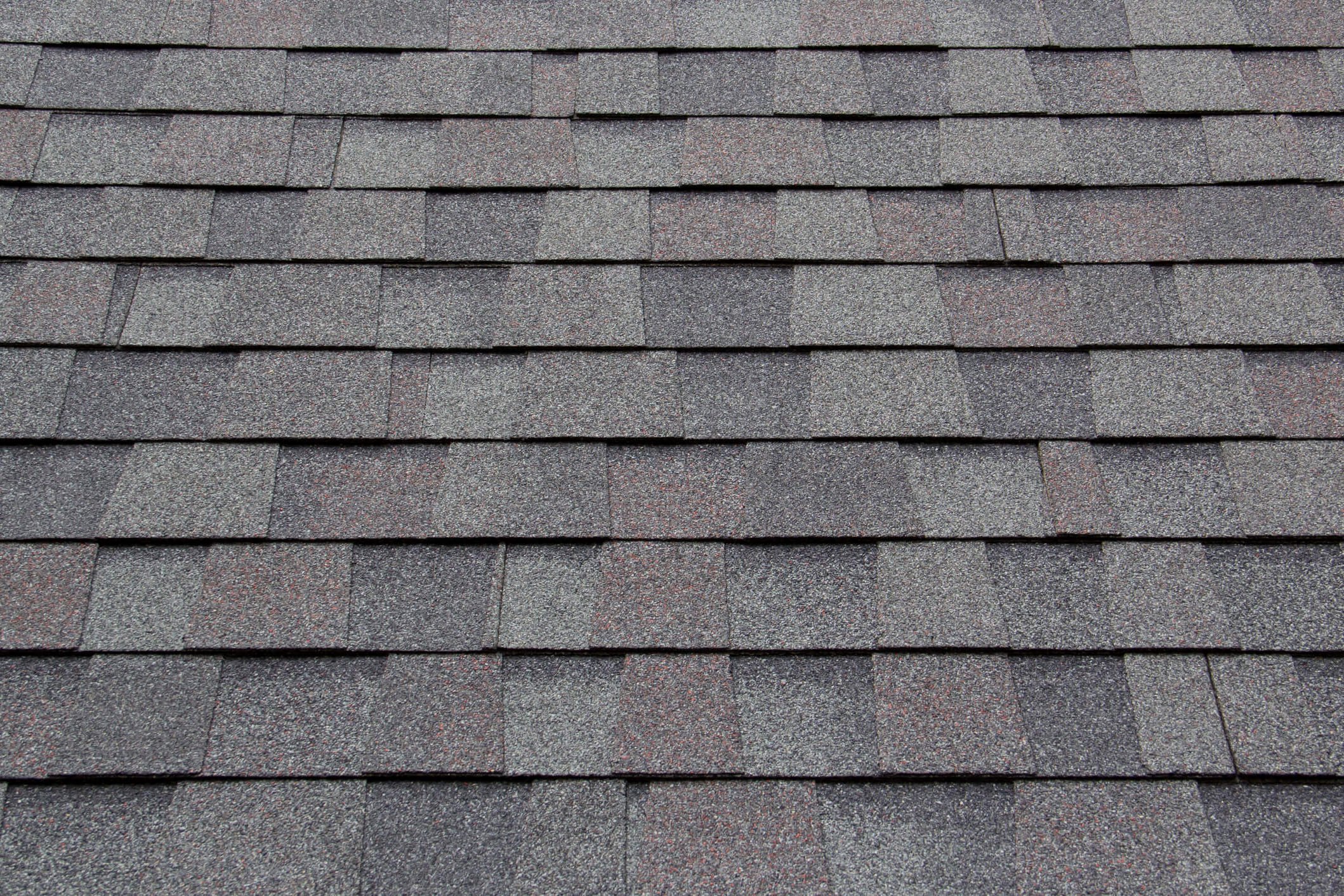
Architectural asphalt shingles offer a popular combination of aesthetics and value.
Maintaining an asphalt shingle roof involves periodic cleaning to remove debris, inspecting for damaged or missing shingles, and addressing any moss or algae growth promptly. While asphalt shingles are a cost-effective choice, their lifespan means they will require replacement sooner than some other materials.
Metal Roofing
Metal roofing has gained significant popularity in recent years due to its exceptional durability, longevity, and energy efficiency. Metal roofs are available in various materials, including steel (galvanized, galvalume, or stainless), aluminum, copper, and zinc. They also come in different styles, from large panels to shingles or tiles designed to look like other materials.
Common metal roofing systems include:
- Standing Seam: This system features panels with raised seams that interlock, concealing the fasteners. This provides a sleek, modern look and offers excellent weather resistance as there are no exposed screws that could potentially leak.
- Exposed Fastener: Panels are overlapped and fastened directly through the panel into the roof deck or purlins. This is typically a more economical option but the exposed fasteners require periodic inspection and potential replacement over time.
- Metal Shingles/Tiles: These are smaller metal pieces formed to resemble traditional asphalt shingles, wood shakes, or tile. They offer the benefits of metal (durability, lifespan) with a more conventional appearance.
Pros of Metal Roofing:
- Exceptional Durability: Highly resistant to wind, hail, fire, and pests.
- Longevity: Can last 40-70 years or even longer, significantly outperforming asphalt shingles.
- Energy Efficiency: Reflects solar radiant heat, which can reduce cooling costs in warmer months. Some systems also provide a good surface for solar panel installation.
- Low Maintenance: Generally requires less maintenance than asphalt or wood roofs.
- Environmentally Friendly: Often made from recycled content and is 100% recyclable at the end of its life.
- Snow Shedding: Smooth surface helps snow slide off, reducing the risk of heavy snow loads (though this can sometimes be a drawback if snow slides onto pedestrian areas).
Cons of Metal Roofing:
- Higher Upfront Cost: Typically more expensive than asphalt shingles, though the cost can be offset by its longer lifespan.
- Noise: Can be noisier during rain or hail compared to other materials, although this can be mitigated with proper underlayment and insulation.
- Dent Resistance: Some types of metal, especially lighter gauge panels, can be susceptible to denting from large hail or falling branches.
- Installation Complexity: Requires specialized knowledge and experience for proper installation, particularly for standing seam systems.
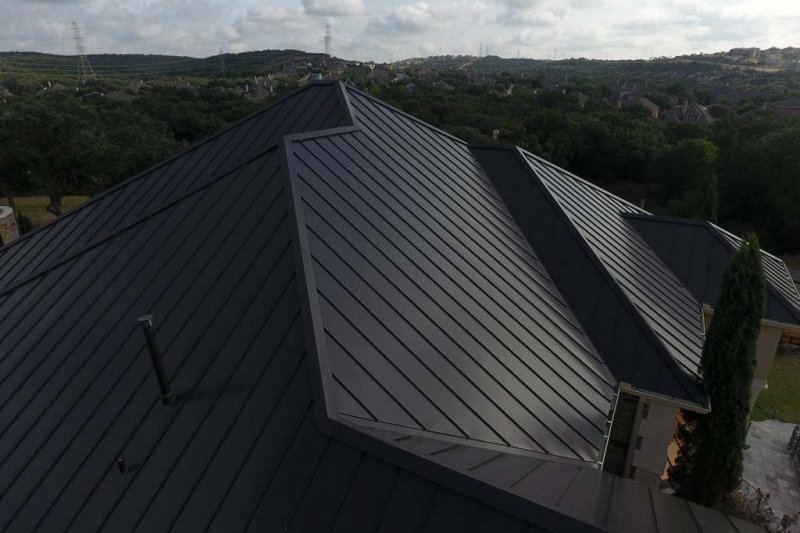
Standing seam metal roofs offer modern aesthetics and long-term durability.
Metal roofing is a robust and long-lasting option that can be a wise investment despite the higher initial cost, especially in areas prone to severe weather.
Tile Roofing
Tile roofs, traditionally made from clay or concrete, offer exceptional durability, longevity, and a distinct aesthetic appeal. They are common in regions with warm, dry climates but can also perform well in other areas if properly installed with appropriate underlayment and flashing systems.
- Clay Tiles: Made from baked clay, these tiles are known for their natural beauty, colorfastness, and resistance to fire and pests. They are heavy and require a strong roof structure to support their weight.
- Concrete Tiles: Made from a mix of cement, sand, and water, concrete tiles are less expensive than clay tiles and can be molded into various shapes and colors, including profiles that mimic wood shakes or slate. They are also very heavy and durable.
Pros of Tile Roofing:
- Exceptional Longevity: Can last 50-100 years or even longer with proper maintenance.
- Durability: Highly resistant to fire, wind, hail (depending on the type), and pests.
- Aesthetics: Offers a unique, classic, or Mediterranean look depending on the style.
- Energy Efficiency: The natural ventilation beneath the tiles can help keep the attic cooler.
Cons of Tile Roofing:
- High Cost: One of the most expensive roofing materials upfront.
- Weight: Requires a robust roof structure to support the significant weight of the tiles, which may necessitate structural modifications.
- Fragility: While durable against weather, individual tiles can be brittle and break if walked on improperly or struck by heavy objects.
- Installation Complexity: Requires skilled installers experienced with tile systems.
- Maintenance: While the tiles themselves last long, the underlayment beneath them may need replacement sooner, requiring careful removal and reinstallation of tiles.
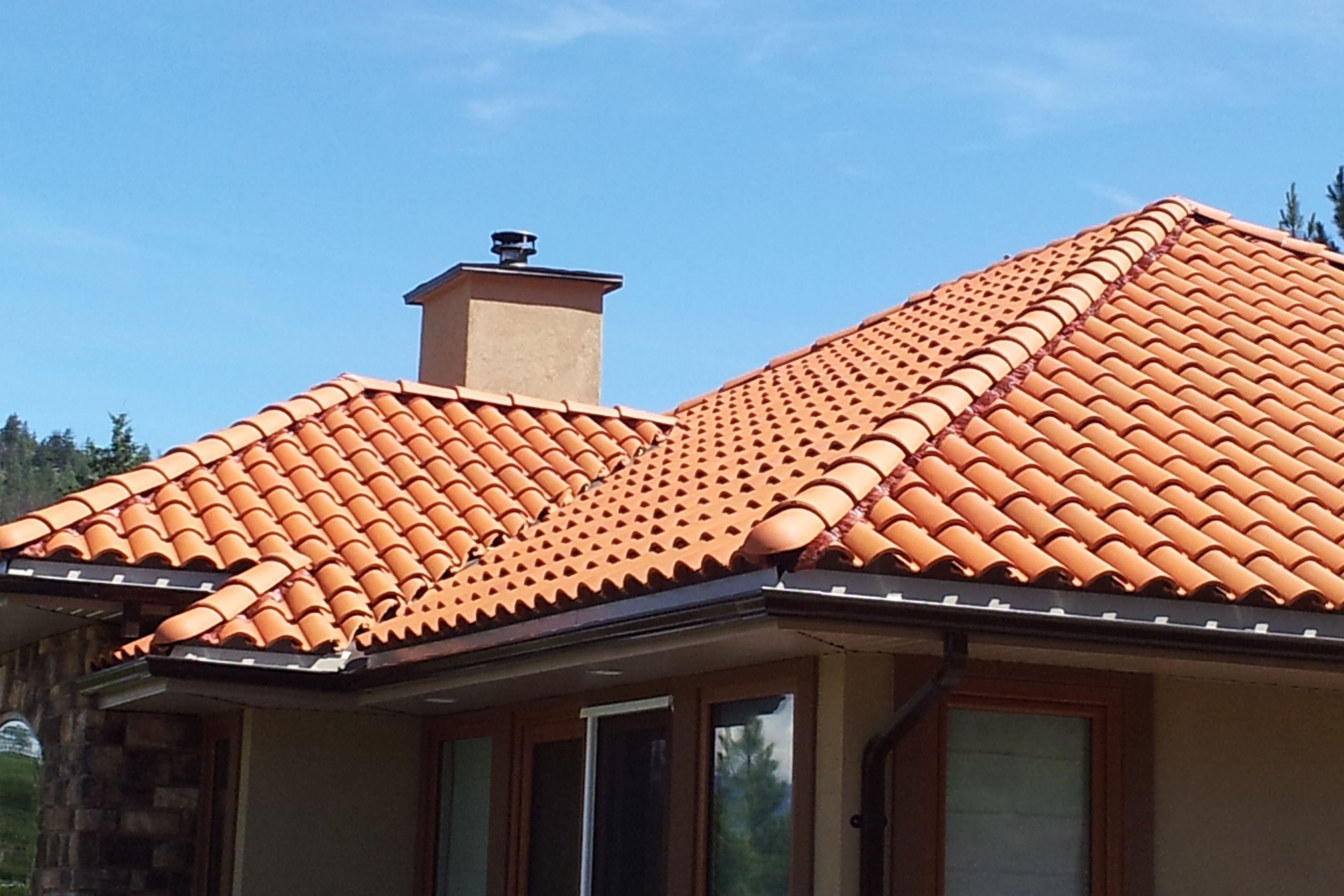
Clay tile roofs provide a classic, enduring aesthetic.
Tile roofing is a premium option that offers unparalleled longevity and aesthetic appeal, suitable for homes designed to support its weight and complement its style.
Wood Roofing (Shakes and Shingles)
Wood roofing, typically made from cedar, redwood, or pine, provides a natural, rustic, and aesthetically pleasing look. Wood roofs come in two forms:
- Wood Shingles: Machine-sawn to be uniform in thickness and size, offering a smoother, more tailored appearance.
- Wood Shakes: Hand-split or sawn and then split, resulting in a more textured, rustic, and irregular look. Shakes are generally thicker than shingles.
Pros of Wood Roofing:
- Natural Beauty: Offers a unique, warm, and classic aesthetic.
- Insulation: Provides some degree of natural insulation.
- Wind Resistance: Can perform well in high winds if properly installed.
Cons of Wood Roofing:
- Maintenance: Requires regular maintenance, including cleaning, treatment for moss/fungus, and potential repairs.
- Lifespan: Generally shorter lifespan (20-30 years) than metal or tile, and significantly impacted by climate and maintenance.
- Fire Resistance: Wood is combustible, and while treatments can improve fire resistance, they may not meet fire codes in all areas. Check local regulations.
- Susceptibility to Moisture: Prone to rot, decay, and moss/algae growth in damp environments if not properly maintained and ventilated.
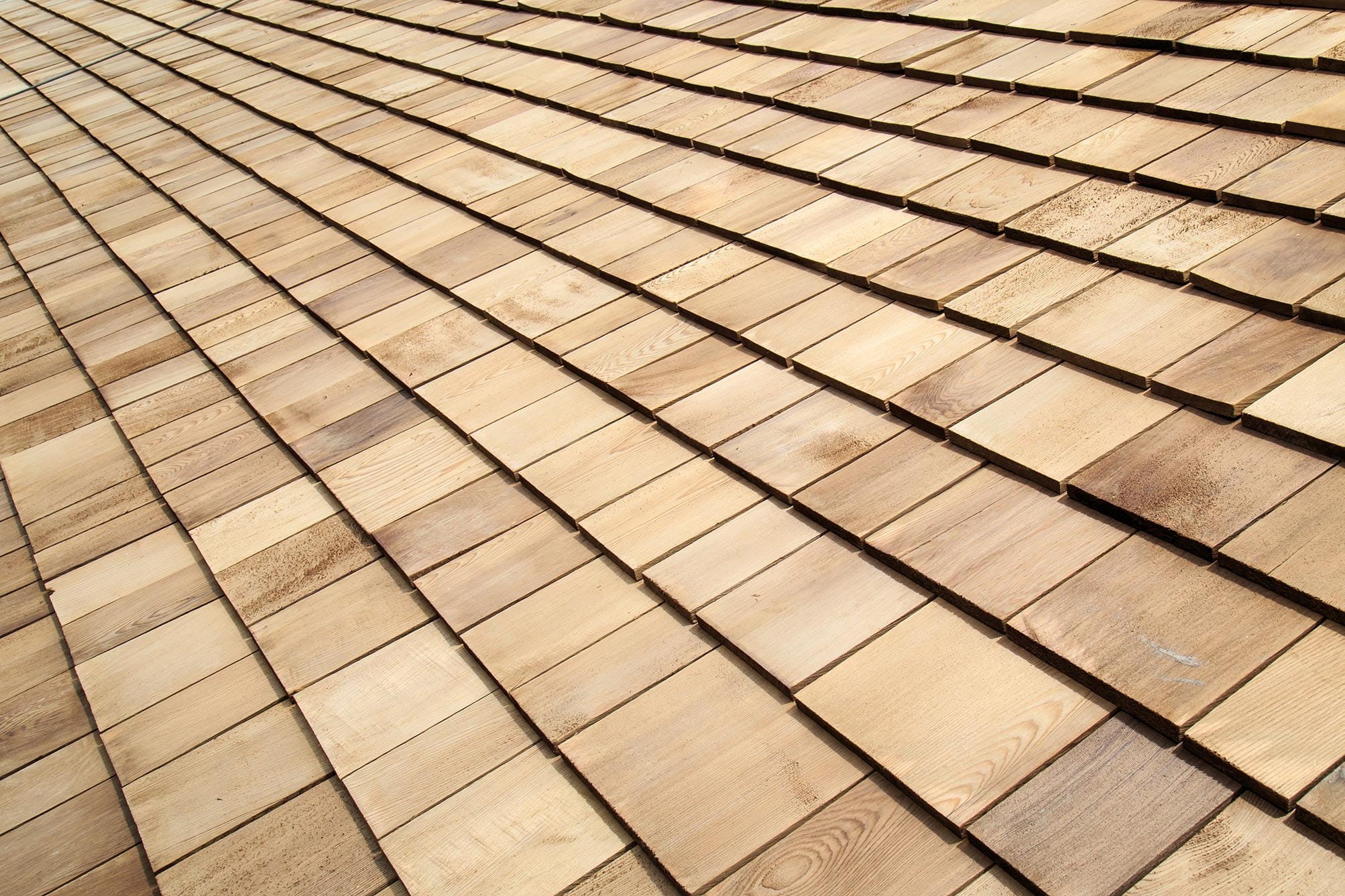
Wood shakes offer a natural, rustic appearance but require diligent maintenance.
Wood roofing is a beautiful option but demands a higher level of maintenance and is not suitable for areas with high fire risk or consistently damp conditions without rigorous treatment and care.
Other and Specialty Options
Beyond the most common materials, homeowners have other options to consider:
- Synthetic Roofing: Made from recycled plastics or rubber, synthetic shingles and shakes are designed to mimic the look of slate or wood shakes but offer enhanced durability, fire resistance, and lower maintenance. They are lighter than tile or slate and often come with long warranties.
- Slate Roofing: A premium, natural stone product offering incredible beauty and longevity (often 100+ years). Slate is fireproof and highly durable but is very heavy, expensive, and requires expert installation.
- Solar Shingles: These innovative products integrate solar energy generation directly into the roofing material, blending seamlessly with traditional shingles. While the technology is still evolving and the upfront cost is high, they offer the potential for long-term energy savings and a modern look.
These specialty options offer unique benefits but often come at a higher cost or have specific installation requirements.
Factors Influencing Your Roofing Material Choice
Selecting the right roofing material involves balancing various factors specific to your home, location, and preferences.
Climate and Weather Patterns
The local climate in Scappoose, Oregon, plays a significant role in how different roofing materials perform over time. The region experiences considerable rainfall, occasional strong winds, and temperature fluctuations. Damp conditions can encourage moss and algae growth on certain materials, particularly asphalt and wood. Materials that are resistant to moisture absorption and can shed water effectively are advantageous. Wind resistance is also important, making materials like properly installed architectural asphalt, metal, or tile good choices. The potential for ice dams in winter should also be considered, and materials/systems that promote proper drainage and ventilation are crucial.
Budget and Cost Considerations
Roofing projects represent a significant investment. Material cost is a major component, but it's not the only one. Installation costs vary depending on the material's complexity and the contractor's expertise. The lifespan of the material is crucial for calculating the long-term cost of ownership (cost per year). While asphalt is cheapest upfront, a metal or tile roof, despite a higher initial price, may be more cost-effective over several decades because it lasts much longer and requires fewer replacements.
Budgeting for a roof replacement or considering different material costs? Get a detailed estimate quickly and easily without an in-person visit. Get your free instant roof estimate
Architectural Style and Aesthetics
The roofing material contributes significantly to your home's curb appeal and should complement its architectural style. A modern home might suit standing seam metal, while a traditional house might look best with architectural asphalt shingles, wood shakes, or even tile depending on the specific design. Color and texture options are vast, allowing you to customize the look.
Weight of the Material
As mentioned, materials like tile and slate are very heavy and require a roof structure capable of supporting the load. Lighter materials like asphalt, metal, and synthetics are suitable for most standard roof structures without modification.
Building Codes and Homeowners Association Rules
Local building codes in Scappoose, Oregon, will dictate minimum requirements for roofing materials, installation methods, and potentially fire resistance ratings. Homeowners associations (HOAs) may also have specific rules regarding approved materials, colors, or styles. Always check with the relevant authorities before making a final decision.
Energy Efficiency
Some roofing materials and colors are more energy-efficient than others. Lighter-colored roofs and metal roofs with reflective coatings can reduce heat absorption, lowering cooling costs. Proper insulation and ventilation beneath the roof are also critical for energy efficiency.
Key Components of a Healthy Roof System
The roofing material itself is just one part of a complete roofing system. Several other components work together to protect your home. Understanding these is vital for ensuring your roof performs correctly and lasts its intended lifespan.
Underlayment
Installed directly on the roof deck before the roofing material, underlayment provides an extra layer of protection against water penetration. Felt paper (asphalt-saturated) and synthetic underlayments are common types. Ice and water shield, a waterproof membrane, is often required in valleys, around chimneys, and along eaves in colder climates prone to ice dams.
Flashing
Flashing involves installing thin pieces of metal (aluminum, copper, or steel) or other waterproof material around vulnerable areas of the roof where planes meet or where the roof is penetrated by chimneys, vents, skylights, or walls. Proper flashing is critical for preventing leaks in these complex areas. Faulty or aged flashing is a common source of roof leaks.
Ventilation
Adequate attic ventilation is essential for a healthy roof and home. A properly ventilated attic helps regulate temperature and moisture levels. In summer, it allows hot air to escape, reducing cooling costs. In winter, it helps prevent ice dams by keeping the roof deck temperature closer to the outside temperature and removes moisture that rises from the living space, preventing condensation that can lead to mold, mildew, and rot in the attic and roof structure. Ventilation is typically achieved with a combination of intake vents (at the eaves or soffits) and exhaust vents (at the ridge or high on the roof).
Proper ventilation is key to preventing moisture buildup and extending the life of your roof. Ensure your roofing system includes adequate intake and exhaust vents.
Signs Your Roof Needs Attention
Regularly inspecting your roof can help you identify potential issues before they become major problems. Here are some common signs that your roof may need repair or replacement:
- Missing or Damaged Shingles: Curled, cracked, blistered, or missing shingles are clear indicators of wear and tear or storm damage.
- Granule Loss: For asphalt shingles, significant loss of the ceramic granules can be seen in gutters or downspouts. This means the shingle's protective layer is deteriorating, exposing the asphalt to UV rays.
- Sagging Roof Deck: A visible sag or dip in the roofline can indicate structural issues or damage to the roof deck from moisture.
- Water Stains or Leaks Indoors: Stains on ceilings or walls, or active drips, are definite signs of water penetrating the roof system.
- Moss and Algae Growth: While not always immediately damaging, extensive moss can trap moisture and degrade roofing materials over time.
- Higher Energy Bills: A failing roof or poor ventilation can lead to increased heating and cooling costs.
- Age of the Roof: Knowing the age of your roof and the typical lifespan of the material installed is important for anticipating when replacement might be needed.
If you notice any of these signs, especially water stains or active leaks, it's crucial to address the issue promptly to prevent further damage to your home's structure and interior.
Dealing with a roof leak or notice storm damage? Don't wait – get a professional assessment quickly. Book a roofing appointment
The Importance of Professional Installation
Even the highest quality roofing material will fail prematurely if not installed correctly. Proper installation requires expertise, attention to detail, and adherence to manufacturer specifications and local building codes. A qualified roofing contractor understands how to prepare the roof deck, install underlayment and flashing correctly, ensure proper ventilation, and apply the chosen roofing material so it performs as intended and provides maximum weather protection.
Choosing a reputable local roofing company is essential. Look for contractors who are licensed, insured, and have positive reviews or references. Don't hesitate to ask questions about their experience with the specific material you're considering and their warranty on workmanship.
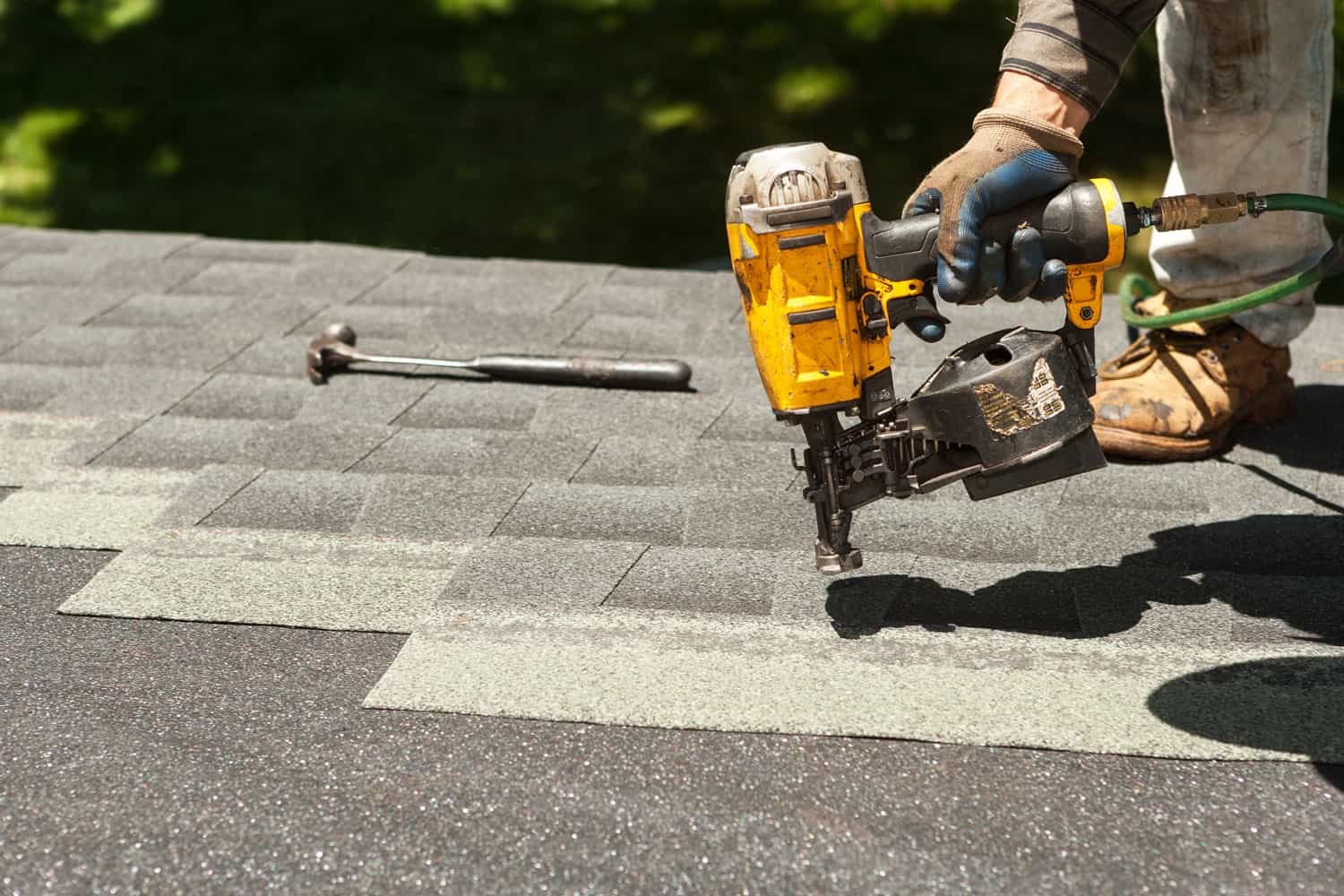
Skilled installation is crucial for a roof's performance and longevity.
Maintaining Your Roof
Regular maintenance can significantly extend the life of your roof and help prevent costly repairs.
- Regular Inspections: Periodically inspect your roof from the ground or with binoculars, looking for obvious signs of damage, missing shingles, or debris buildup. Consider a professional inspection every few years or after major storms.
- Keep Gutters Clean: Clogged gutters can cause water to back up onto the roof, leading to rot and leaks.
- Remove Debris: Clear leaves, branches, and other debris from the roof surface, especially in valleys and around chimneys or vents.
- Address Moss and Algae: If moss or algae is a problem, use appropriate cleaning methods or treatments recommended for your specific roofing material. Be cautious with high-pressure washing, which can damage some materials.
- Trim Overhanging Branches: Prevent damage from falling branches and reduce debris accumulation by trimming trees close to the roof.
Making the Best Roof Choice
Choosing the right roofing material for your home in Scappoose, Oregon, involves careful consideration of durability, cost, aesthetics, and the specific demands of the local climate. Whether you prioritize the long-term investment of metal or tile, the classic appeal of wood, or the proven value of asphalt shingles, understanding the characteristics of each option is the first step.
Planning for a new roof or evaluating your current one is a significant undertaking. Having reliable information about material costs and connecting with qualified local professionals are key to a successful project.
Ready to plan your roofing project or explore cost options? Get a fast, free, and accurate estimate for your home. Get your free instant roof estimate
If you've identified urgent issues like leaks or storm damage, prompt professional attention is necessary to protect your home.
Facing an urgent roofing issue that needs immediate attention? Easily connect with pre-vetted local roofers and schedule an appointment directly. Book a roofing appointment
By researching your options and utilizing available resources, you can make a confident decision that ensures your home remains protected and beautiful for years to come.
